Discovering Antarctica’s Wildlife, A Deep-Freeze Adventure with the Scouts
Gentoo penguins are one of the fascinating wildlife species we encountered on our Antarctic trip with Venturing Crew 774 of Southern California , a co-ed branch of the California Boys Scouts Image: © Bernd Steinebrunner
The Idea Becomes a Reality
© Bernd Steinebrunner Author and photographer.
In December 2021, a group of 39 youth and adults from Venturing Crew 774 of Southern California, a co-ed “branch” of the Boy Scouts, embarked on an epic, once-in-a-lifetime adventure: an expedition to the magical continent of Antarctica.
It was the idea of Jeff B., a Scout leader, scientist, professional scuba diver, and educator, who has been to Antarctica several times.
✓ Trip Tips
Where: Antarctica
When: December or Northern Hemisphere Winter
How: Small boat Guided tour
Who: Scouts. young people 14-21-yo plus adults.
Ask us about your or your organization’s Antarctic Adventure.
Jeff B. first approached me in 2020 with the idea of taking perhaps eight scouts and 2-4 adults as the first organized Scouting group to Antarctica. Jeff has been a high-adventure leader for our scouting troop. He, our sons, and I have had numerous amazing adventures together, backpacking the California mountains, and have become friends. So, when Jeff mentioned this adventure, it was a no-brainer for me. I knew we would be in for a treat.
My son, Markus, was supposed to start college that fall, but we decided it made sense for him to delay it by a semester. Markus had just achieved Eagle Scout, the highest rank in Scouting, and this trip was his reward.
Our participants came from all over the country and even from Canada: 19 youths, ages 14 to 21, plus 20 adults, some accompanied youngsters while others traveled as adult Scouts. We all joined the co-ed 774 Venturing Crew of Southern California.
As an avid photographer, I was ready to experience the landscape and wildlife of this foreign continent. But for me, the essential factor was that I could share this adventure with my son.
Getting to Antarctica is an Adventure in Itself
The Patagonian Mountains frame the Beagle Channel and picturesque schooner. Our ship, the Plancius, was less romantic but more ice-ready! Image: ©Bernd Steinebrunner
Our group rendezvoused in Houston, Texas then flew on to Argentina. There, we traveled through Buenos Aires, made a quick stop at the most southern town of the world (the "End-of-the-World"), Ushuaia, and hiked in the Tierra Del Fuego National Park.
And then we met the boat - and prepared to cross the famous Drake Passage around Cape Horn.
Our host company, Oceanwide Expeditions, provided 12 leaders, scientists, and experts in topics ranging from oceanography to ornithology and meteorology to marine biology, who would be with us for the duration of the trip. They explained that the two-day trip across the Drake could be choppy or calm – they called it the "Drake Shake" or the Drake Lake." Unfortunately, we experienced the former. On our small, 108-passenger expedition boat, we encountered 50+mph winds and 25+ foot swells. But with the proper medication, and some compelling diversions, even I, who gets easily seasick, survived the crossing.
Antarctica’s Uniquely Adapted Seabirds Helped Me Survive “The Shake”
A built-in desalination filter allows Antarctic seabirds, like this Black-browed Albatross (IUNC: Near Threatened) to survive without fresh water. Image: ©Bernd Steinebrunner
The scientists and expedition leaders on board gave presentations about their areas of expertise throughout the day, distracting us from the rocking and rolling boat. In between, the youth often got together to play cards or other games.
But, what helped me "weather" this passage was viewing and photographing the many of the seabirds that followed our ship. We saw birds I have never heard of, let alone seen in the wild, like the enormous Wandering albatrosses with over 8-foot wing spans and the Black-browed albatross, the Southern Petrel, Cormorants or Antarctic Shags, Skuas, Kelp Gulls, and many more - each adapted uniquely to this sometimes hostile environment.
The largest of all the petrels, the Southern petrel has a white morph (10%) and a dark morph (90%). Commercial long-line fishing hooks, cables and plastics are all serious threats. Image: ©Bernd Steinebrunner
I learned that many marine birds—such as penguins, gulls, and albatrosses, have built-in water desalination filters. Salt glands and ducts connected to their bills rid their bodies of excess salts; these birds can drink seawater straight-up since there is no liquid fresh water in Antarctica.
Seeing and photographing birds new to me, such as the South Polar Skua, helped me to survive the “Drake Shake.” Image: ©Bernd Steinebrunner
Discovering the Antarctic, A Continent of Superlatives
We had seen ice and snow-covered mountains before as we sailed between Robert Island and Nelson Island, across the Bransfield Strait from the Antarctic Peninsula. But, the first time I saw an iceberg was at Half Moon Island, a tiny island over 600 miles south of the southern tip of South America. It was VERY cold, VERY windy, and the iceberg was FAR away. It was a little anticlimactic. But then that all changed.
The moon over an iceberg in Antarctica. Image: ©Bernd Steinebrunner
Once at the Antarctic Peninsula and its chain of islands, we found ourselves in more protected waters. The expedition leaders worked to constantly expand our understanding of this magnificent place, for example we learned that Antarctica is the highest, driest, coldest, windiest, and brightest of the seven continents. Roughly the size of the United States and Mexico combined, Antarctica doubles in size in winter due to the freezing seawater around it. The continent is almost entirely covered by a layer of ice that averages more than one mile (1.6km) in thickness but reaches nearly three miles (4.8km) thick in some places. And some of the the ice in Antarctica can be millions of years old.
While we studied the melting iceberg from our Zodiak below, an Antarctic cormorant studied us from its top. Image: ©Bernd Steinebrunner
Our leaders suggested that we choose a piece from the water and taste it. After the first salty lick, you reach the fresh water and release the air trapped in the bubbles. Did I just breathe in ancient air from when the dinosaurs were around?
The daily activities they led helped us to discover even more. We kayaked between icebergs and penguins and spent a night in an ice shelter under open skies. And we watched Humpback and Minke whales, Leopard, Crab Eater, Weddell seals, and many seabirds.
Some brave souls did the polar plunge. For many of the young scouts, this was their highlight. The water was so cold that they could not feel their toes hitting rocks or their legs scraping the floating ice blocks. All they could think was, “I need to get out of this water!”
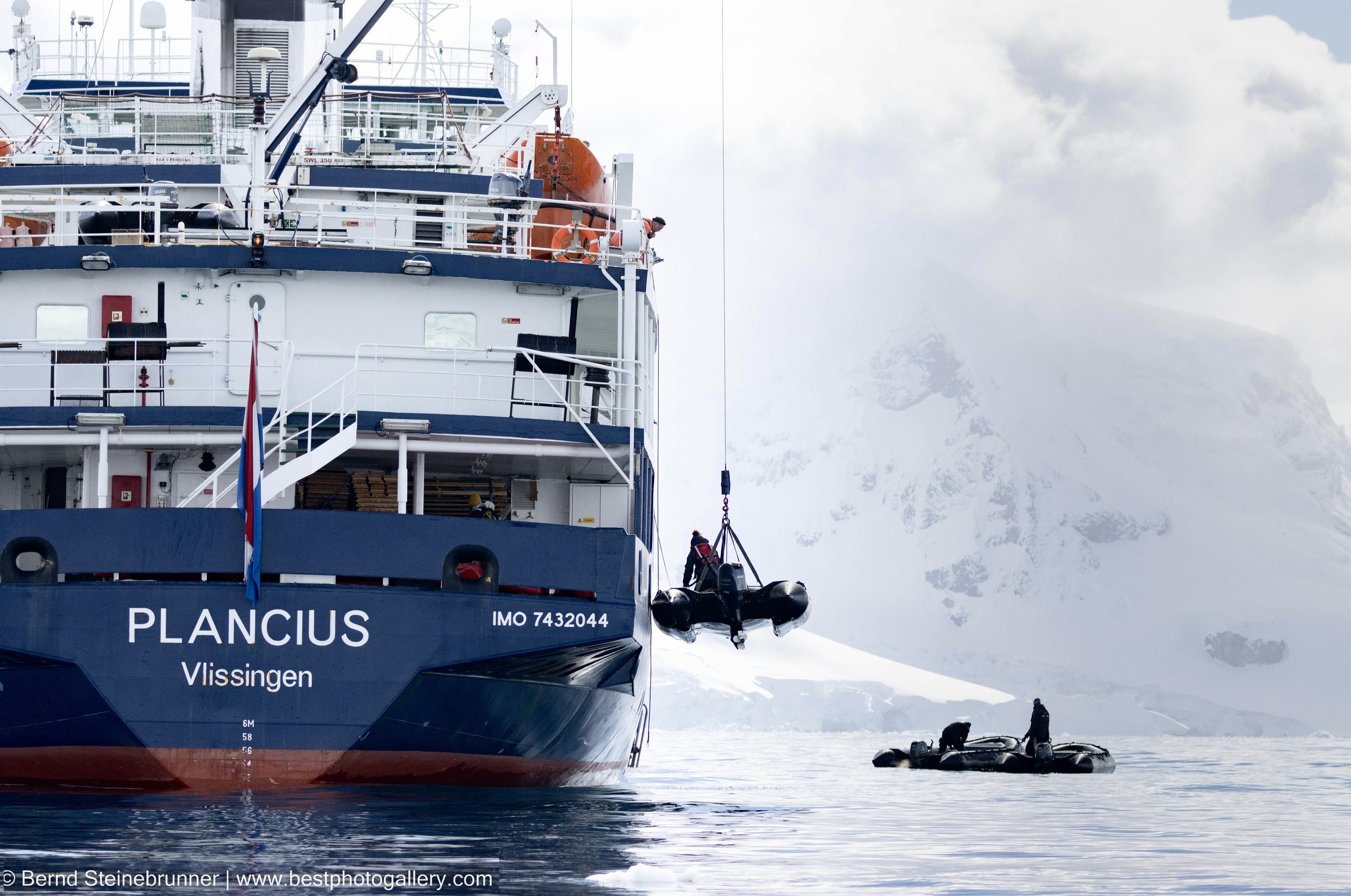
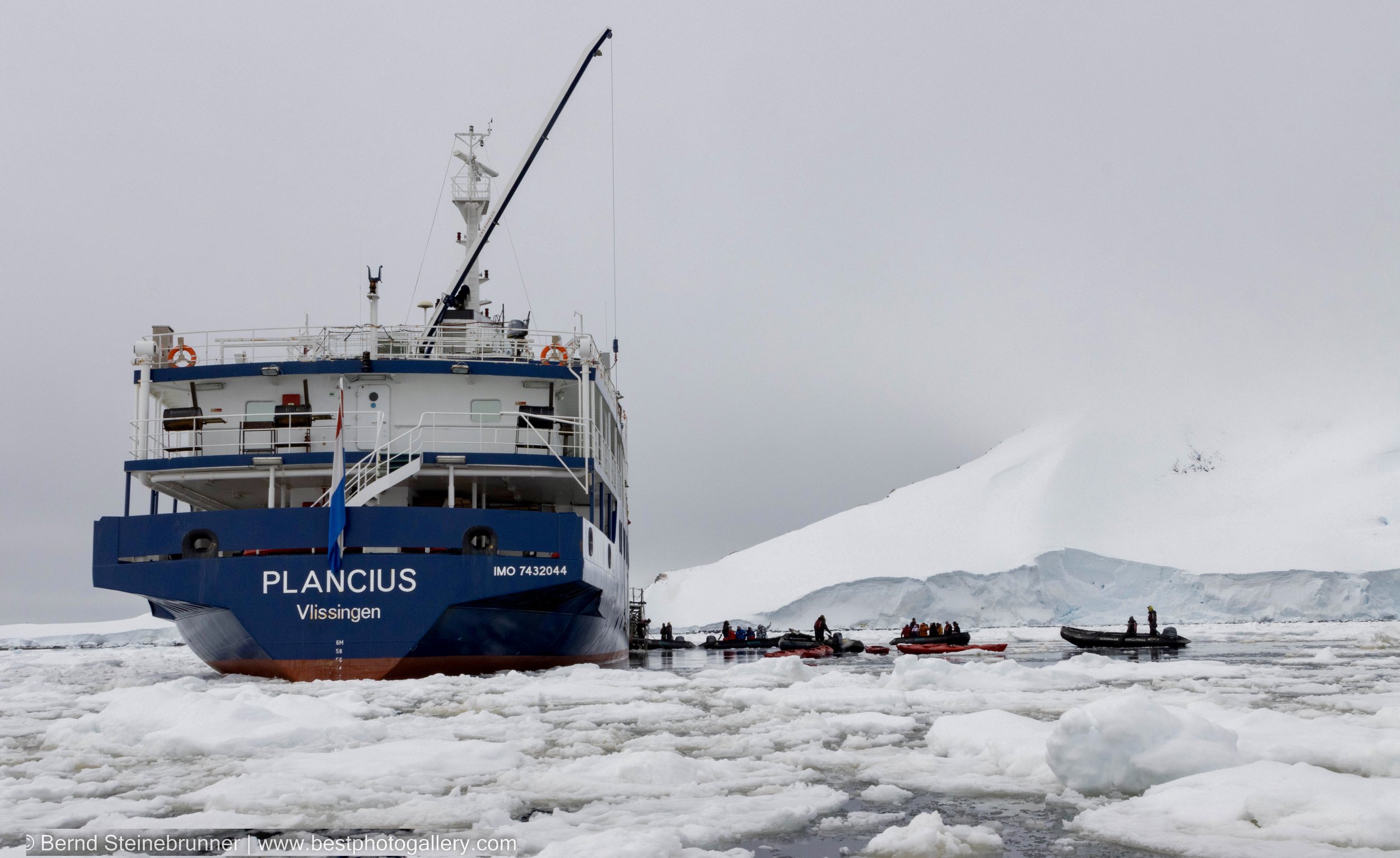
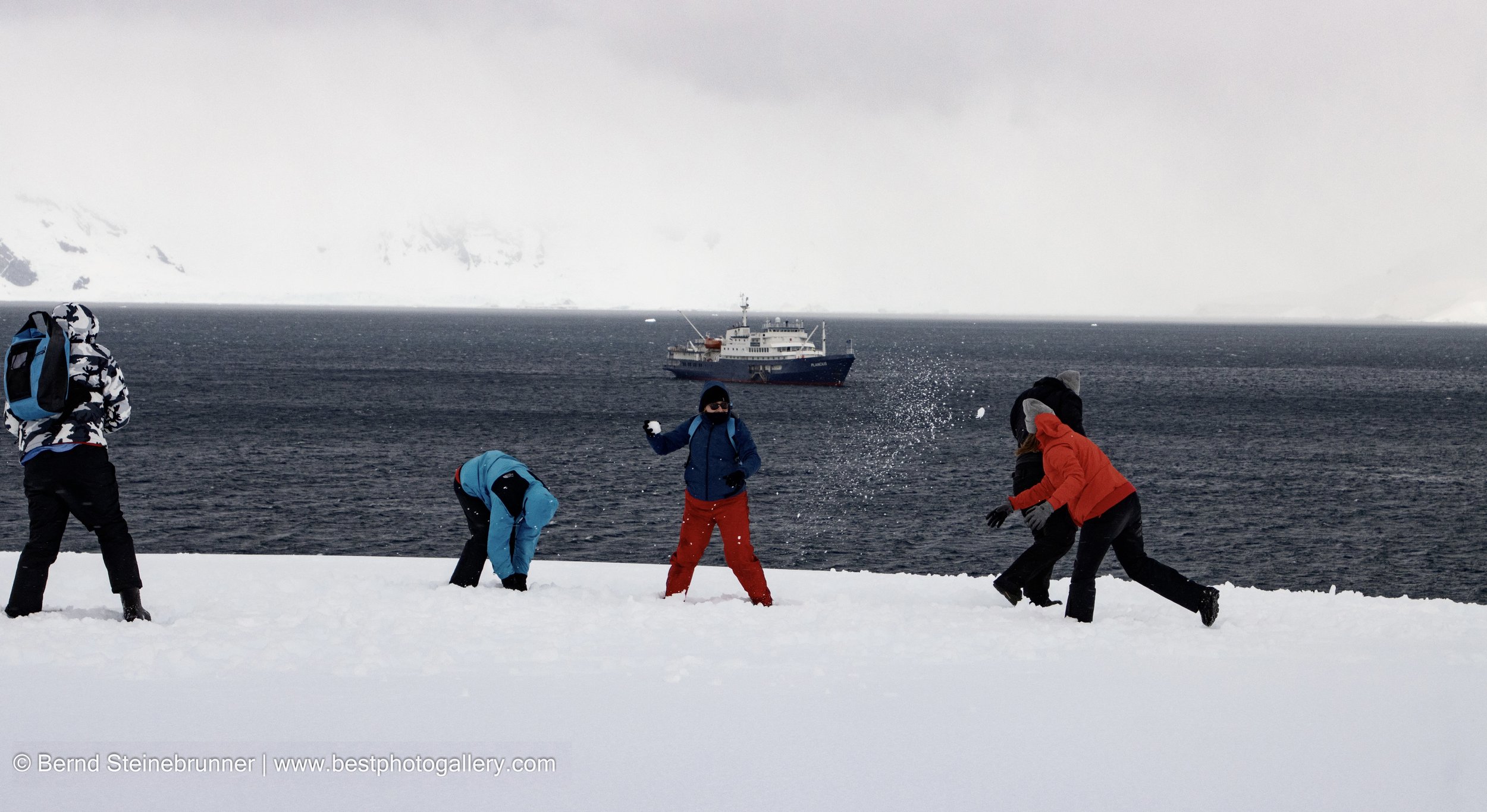

Interested in experiencing the Antarctic? Ask me how.
But my son Markus remembers something else: ”One of the most impactful moments was when we turned off the engine of our Zodiac and just listened to the quiet of the continent in one of the bays filled with floating ice. All you could hear was the dripping of the melting ice, an occasional penguin jumping out of the water, or the call of a Skua or a Tern – it was just mesmerizing."
Getting to Know the Wildlife of Antarctica
Returning from a Zodiac expedition, the sight of this Leopard seal made me completely forget my freezing hands! Image: ©Bernd Steinebrunner
Seals in Antarctica
Six species of seals live in the Antarctic waters, and we saw three of them: the Leopard, Crabeater, and Weddell seal. We did not see the Fur, Ross, or Elephant seals. Most of the time, the seals were lazing around on their respective floe or ice pack, and while most of the ones we saw were “cute,” others were ferocious penguin eaters.
Seeing the Leopard seal was lucky; we were on our way back to our "mother ship" at the end of a cold, windy Zodiac cruise when one of the expedition leaders spotted it and called us all over. I completely forgot about my cold hands at that moment! Initially, it seemed asleep, although it finally got annoyed by the "Paparazzi" in the Zodiacs and displayed its enormous teeth!
On the other hand, the Weddell seals look sweet, but these can be 800 to 1300 pounds (363 - 595kg) and 8 to 11 feet (2.45 -3.5m) long! this species was discovered in the 1820s during expeditions to the area of the Southern Ocean, now known as the Weddell Sea, led by British sealing captain James Weddell.

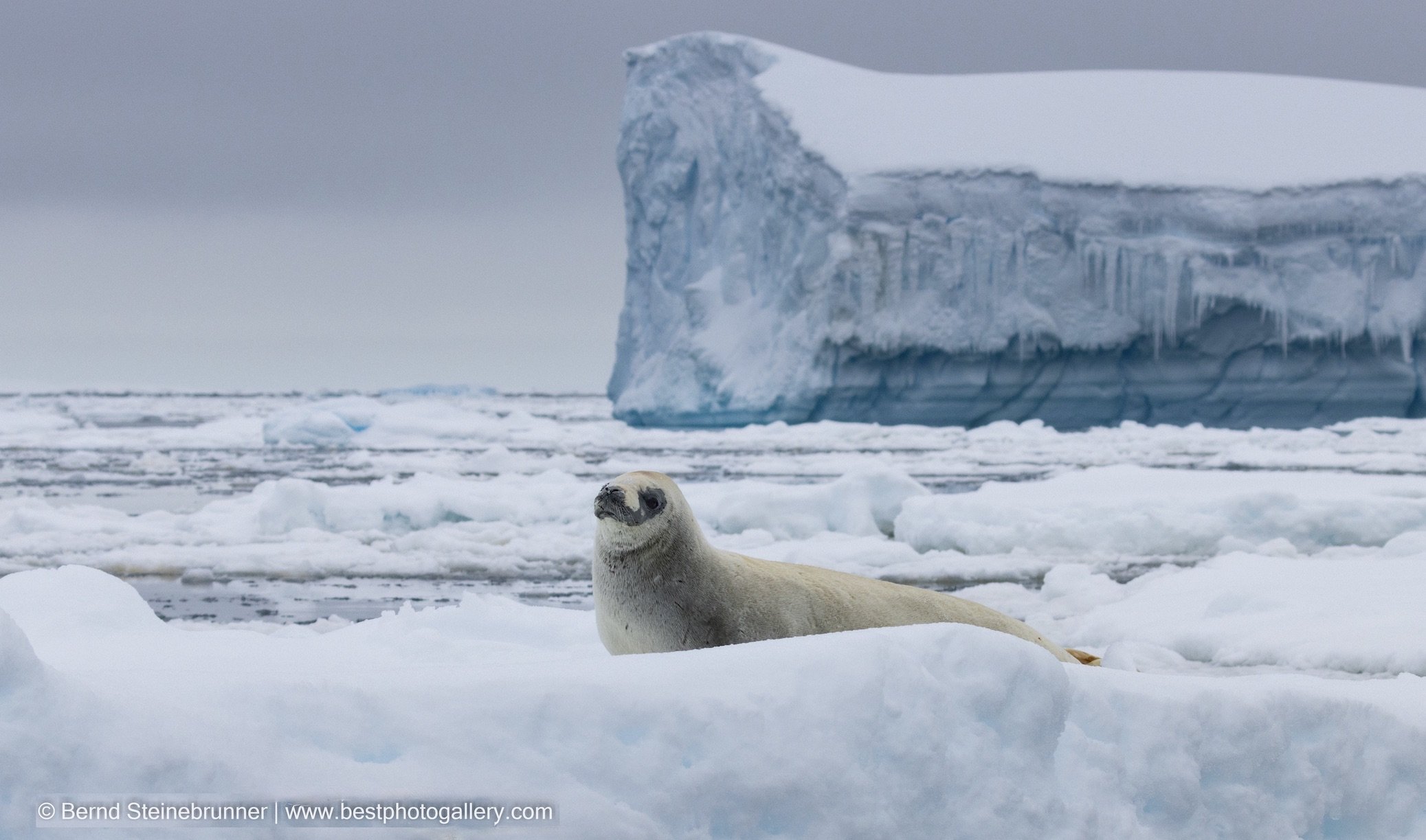
An Introduction to Penguins
Explore the Antarctic for yourself. Ask me how.
Our first landing on the continent was on a beautiful day, clear sky, not insanely cold, and with just a mild breeze.
The Scouts were ecstatic to see their first wild penguins and enjoyed simply sitting down in the snow and allowing the birds to come visit.There are 18 different species of penguins around the world, but only six live in Antarctica, of which we saw three: the Gentoo, the Chinstrap, and the Adelie penguin. Penguins are curious little animals, not afraid of humans, and though we were not allowed to approach them closer than 15 feet (4.6m) we could let them come near us. And to our delight, they did.
A colony of Gentoo penguins. We could not approach them, but they seemed to enjoy approaching us. Image: ©Bernd Steinebrunner
Why Don't Penguins Wear Socks?
So why don't Antarctic penguins get cold feet waddling all over the ice and snow? Our expedition leaders explained.
First, their feet and lower legs are primarily tendons and bones, covered by a thick layer of skin. Second, most muscles that provide mobility are higher up in their bodies, surrounded by fat and feathers. That all makes sense, doesn't it? Third, blood vessels in the penguins' legs constrict to limit blood flow to their feet when it is cold and open when it is warmer.
But the surprising part is that the up- and down-flowing blood vessels are intertwined to provide heat exchange.
We were fortunate to see all three penguin species standing in a line - as if to say, “See, we are different!” Left to right: Adelie with “psychedelic eyes,” Chinstrap with - well.. a chinstrap, and Gentoo with its distinctive red bills and the white patch above their eyes. Image: ©Bernd Steinebrunner
The blood going to their feet gets cooled by the blood flowing back to their body, and the blood flowing back is warmed up so that the penguins' core body temperature does not get cooled down too much by the cold blood coming back from their feet. Isn't that amazing? That is why penguins don't need socks!
Learn about Antarctica’s wildlife in person. Ask me how
We Learned Quite A Bit About Penguins on this Expedition
The flightless penguins spend most of their lives in the water, spending a lot of time searching for food, which, depending on the penguin species, is primarily a mix of crustaceans, small fish, squid, and krill. They congregate in a "waddle" or "rookery" only to mate, nest and raise their chicks. But, did you know that when you encounter a group of penguins in the ocean, they are called a "raft"? And penguins are also quite playful.
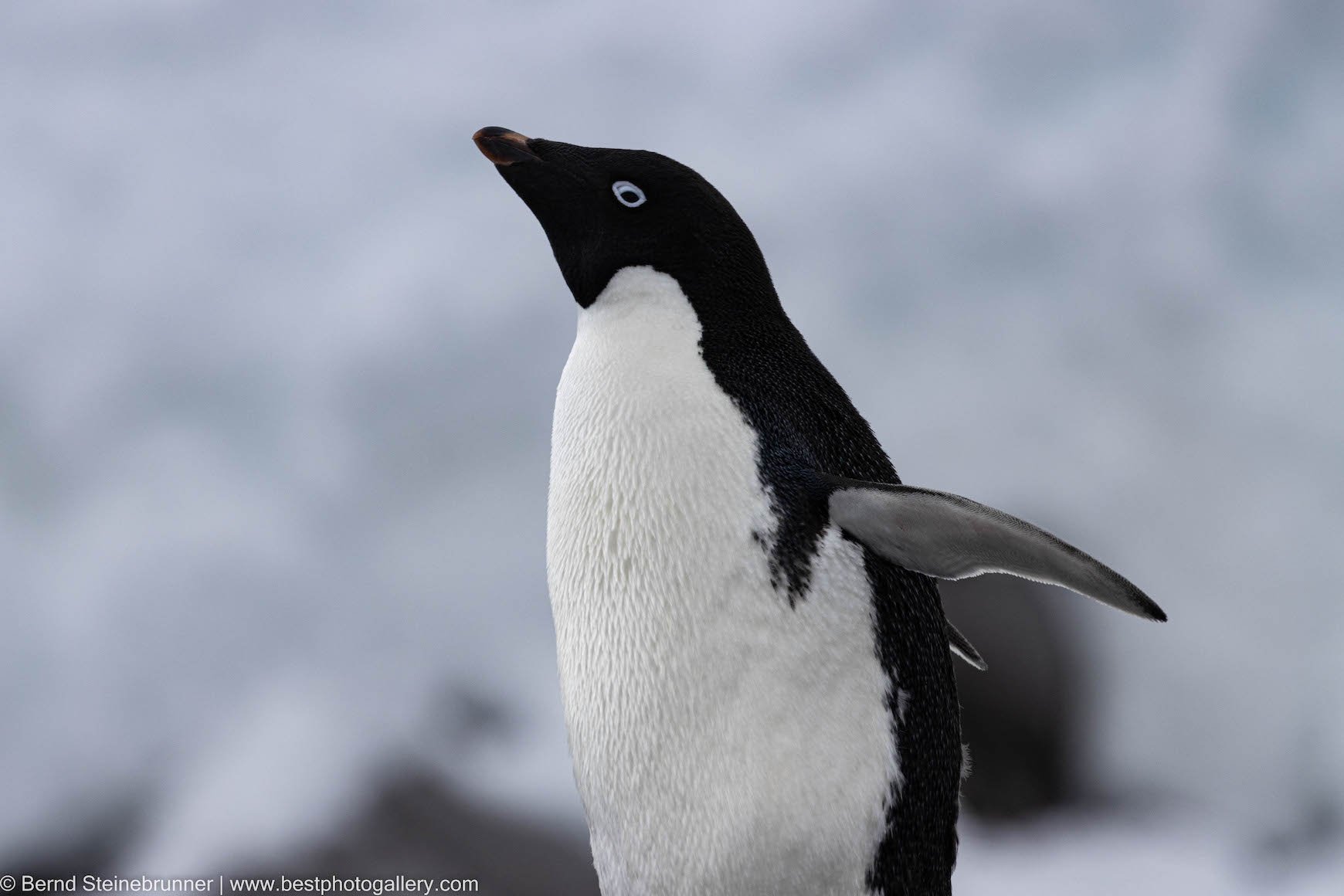
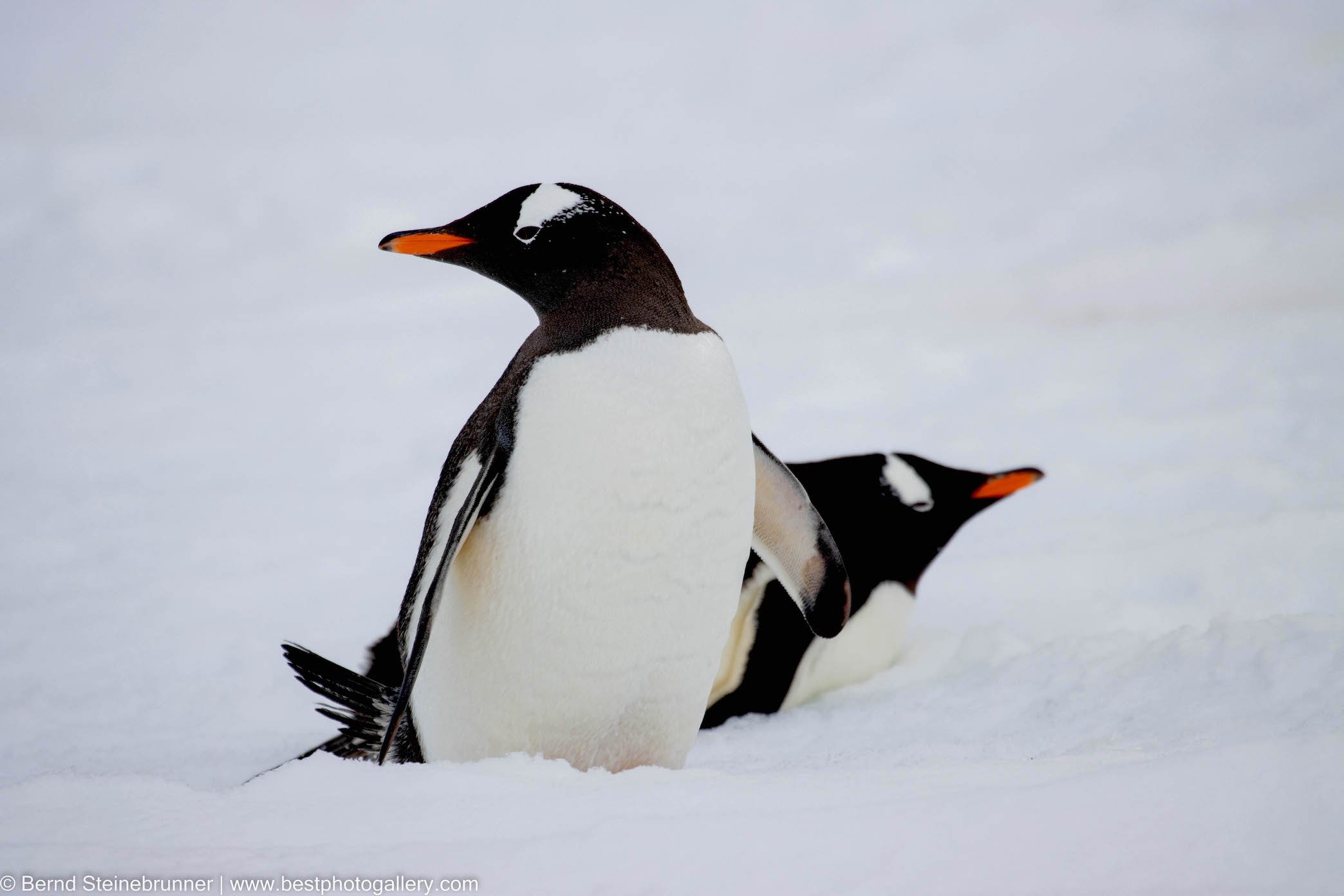
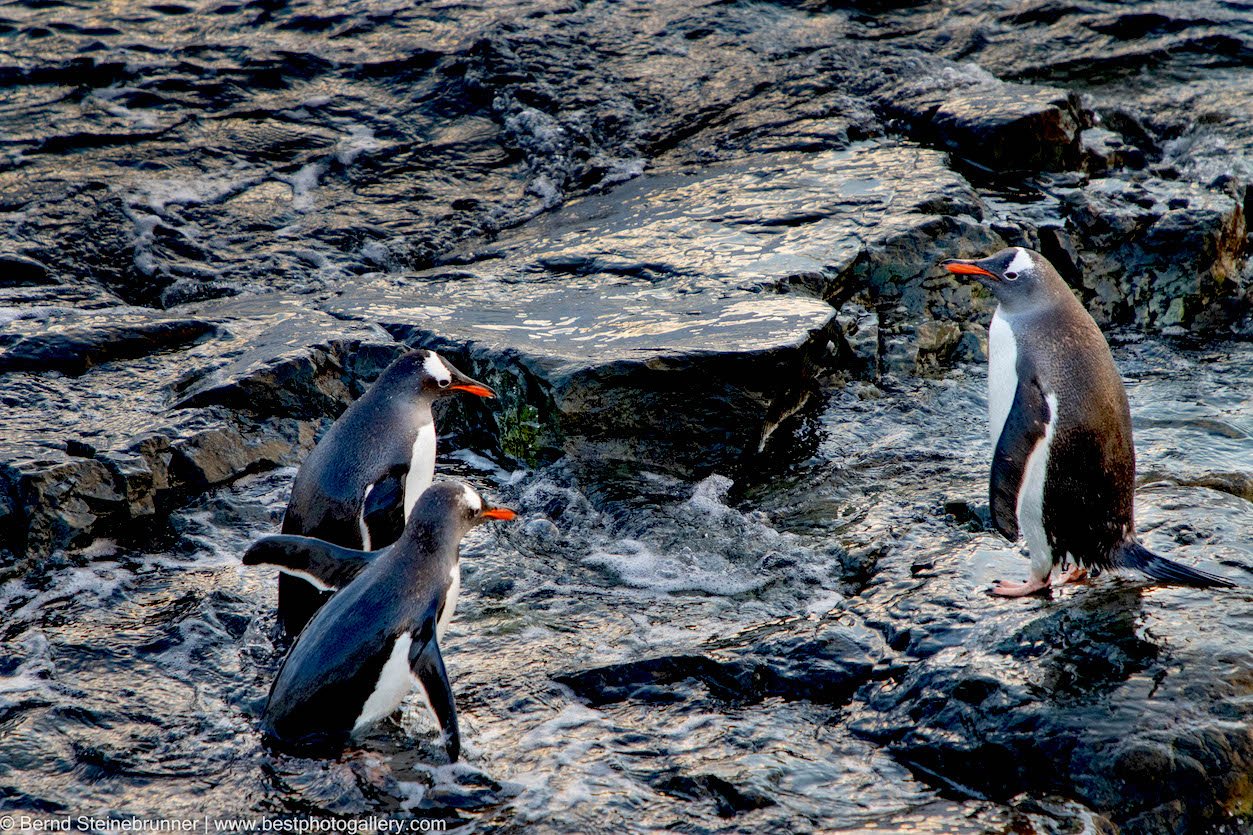
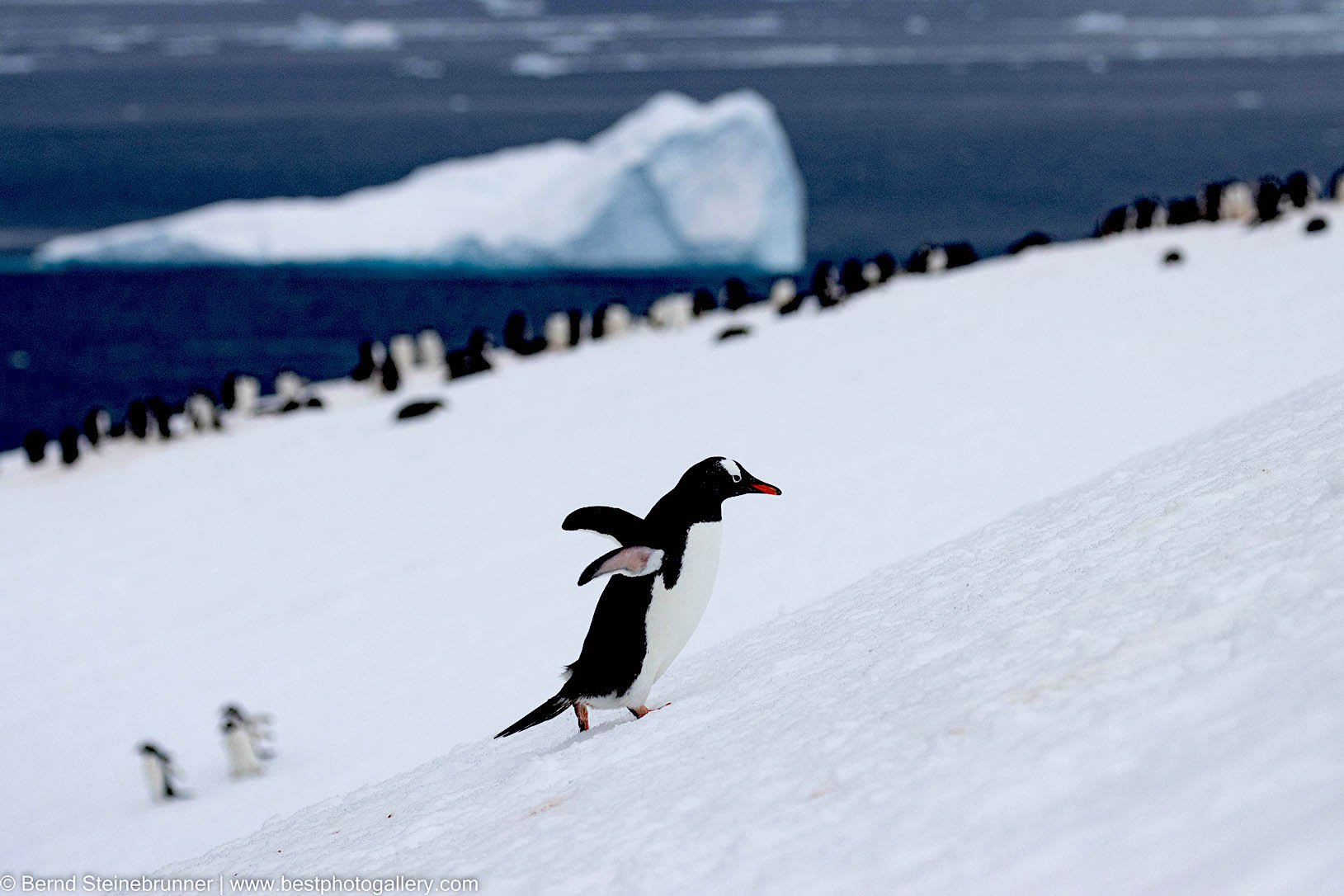
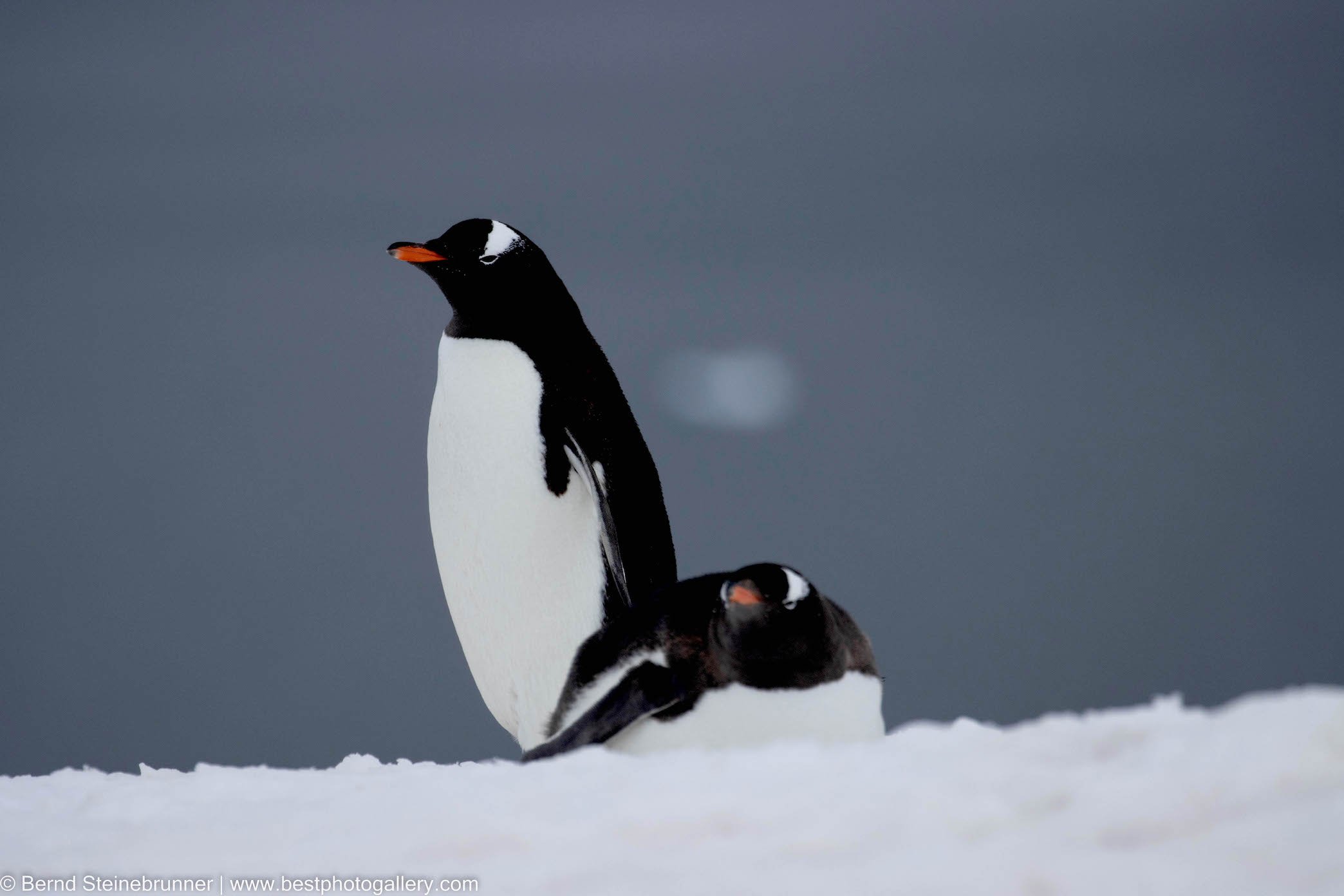
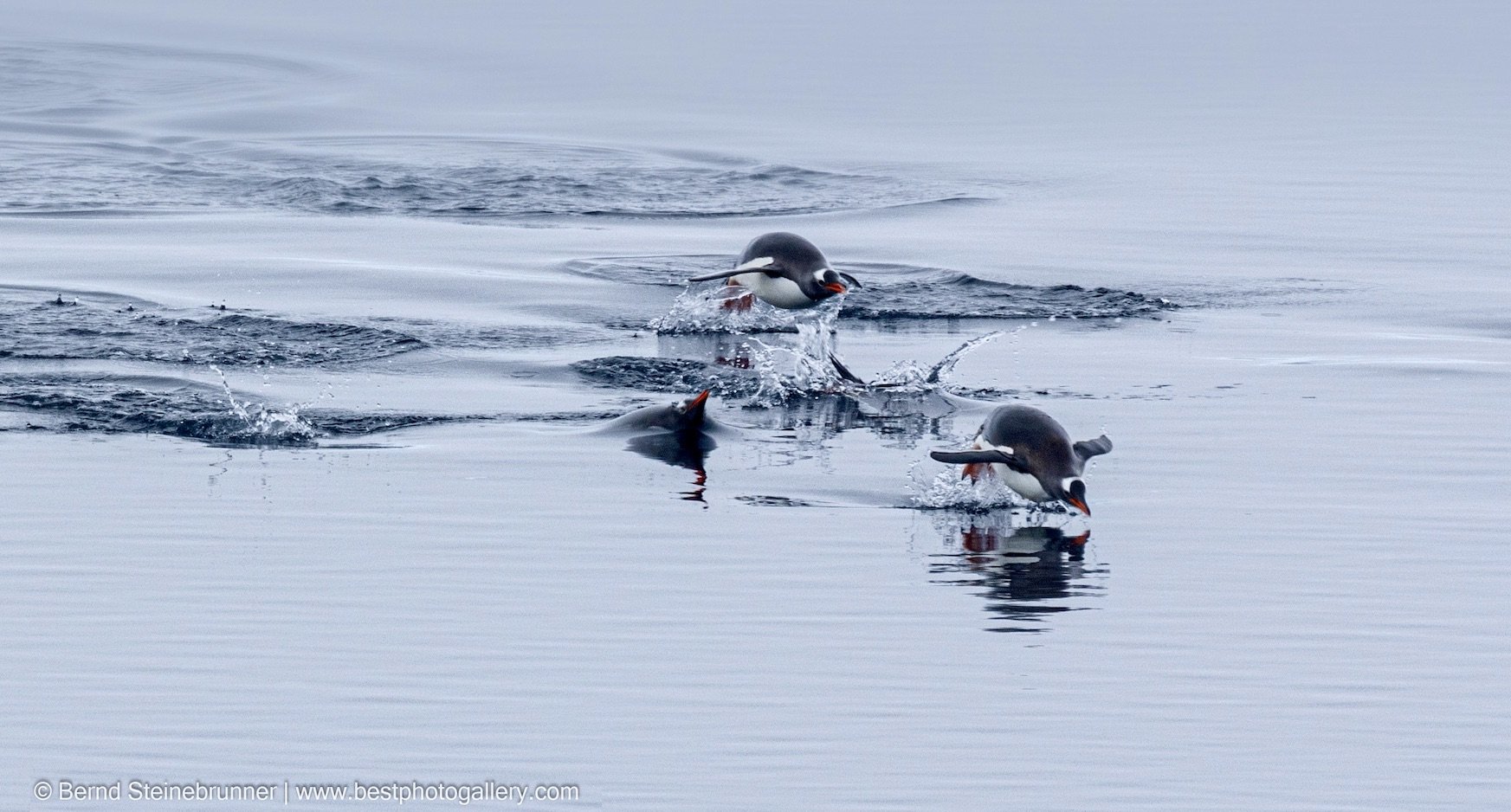
Gentoo, the most common penguin species, are fast underwater swimmers who can grow to 20-35 inches (51-98cm) tall. But we also saw Adelie penguins (our expedition guide Eduardo called them penguins with "psychedelic" eyes) and Chinstrap penguins. The latter is easy to identify as they look like they are wearing helmets with chinstraps.The three species are closely related, so you sometimes see them mixed up in rookeries.
Penguins create "highways," which they use to travel from the rookery to the ocean and back. After a while, depending on the snow and ice conditions, that highway can become quite deep. To respect the animals and their environment, our expedition leaders instructed us not to block or step onto such a highway and to fill in the deep holes our boots left in the snow before we left so the penguins wouldn’t get stuck.
Still and Beautiful, the Lemaire Channel
At first it was shrouded in fog, but the unforgettable Lemaire Channel finally revealed itself to us. © Bernd Steinebrunner
The Lemaire Channel, known for its imposing scenery and eerily still waters, is one of the highlights of Antarctica. At first, it seemed we might not be able to navigate it due to unseasonably tight pack ice, but the channel turned out to be passable. However, as we entered this usually very picturesque scenery,disappointing fog enveloped us.
Explore the Antarctic with your group or organization.
Contact me
In the morning we discovered that falling snow had lightly covered our ship during the night, prompting some scouts to start a snowball fight. Then, after a little while, the sun began peeking through the fog, creating an eerie and mystical landscape. It was incredibly quiet as the ship pushed itself through the ice pack creating scratching and screeching noises in the otherwise wholly calm and tranquil environment.
The Lemaire Channel. Only the strange noises of our ship pushing through the ice broke the Antarctic silence until one Scout yelled, “WHALE!” Image: ©Bernd Steinebrunner
Out of the Stillness - a Whale
Suddenly, one of the Scouts yelled, "Whale!" A humpback whale was showing off its tale in the distance, then after a few showings, it disappeared.
Some of us stayed on the boat's deck to enjoy the calm and beautiful scenery, and as I was leaning against the handrails, the whale popped up right next to me! I quickly captured a few images of the tail with all the barnacles attached and the scars they left behind. I learned that scientists identify humpbacks by the pattern on the underside of the tale and use that to track their movements.
Epilogue
Some of the Scouts of Venturing Crew 774 of the Southern California Scouts. After being isolated for almost two years due to COVID, it was refreshing to be able to travel and socialize. © Bernd Steinebrunner
Sacrifice, New Friends, and Life-Changing Experiences
To join this expedition, many of the youth had had to delay or rearrange their school and college plans - and many had to embark on significant fundraising journeys. Still, I believe that this experience was worth many college credits.
Our 12 on-board expedition leaders were experts in their fields and always had a wealth of knowledge to share, which made this trip very educational. At one point, they commented that they hardly ever had such a young crowd and how refreshing it was to have youth on this expedition. And during the trip, the Venturing Crew conducted multiple Scouting events, such as the celebrations of rank achievements: Court of Honor and Order of the Arrows events, either on the ship or on Antarctic ice.
Some of the young explorers could also help Jeff collect sea life specimens for a Natural History Museum during his dives. And they assisted in cataloging and preserving those specimens gaining real-life insight into the work of a scientist. And the young people made new friends and together shared a once-in-a-lifetime adventure.
The author, Bernd Steinebrunner, and his son, Markus discovering the Antarctic together. © Bernd Steinebrunner
This trip was life-changing for many, as it gave them a glimpse into the greatness and diversity of this planet, how life adapts to its environment, and how humans impact it.
For Markus and me, it was the trip of a lifetime, giving us another shared adventure and bringing us closer.
I hope some of these pictures inspire you to try the seemingly impossible.
The end.
[Bernd’s photos are available for purchase at www.bestphotogallery.com and published in "Journey to the Ice – My photographic Impressions of Antarctica" available at Amazon https://www.amazon.com/dp/B0B8RP5W3M or Blurb https://www.blurb.com/user/BerndSPhoto and see more at @berndsteinebrunner




